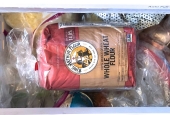
 3
3




 2
2




Pecan Media: food forestry and forest garden ebooks
Now available: The Native Persimmon (centennial edition)








Ross Raven wrote:But we are here to talk about #4. Oxidisation. Oxygen chemically reacting with your food. I'm not a chemist so I cant help you with the chemistry questions. Another old way to do this is using dry ice. Oxygen being lighter than nitrogen, the oxygen would lift out of the bucket.
Air activated hand warmers contain cellulose, iron, water, activated carbon (evenly distributes heat), vermiculite (water reservoir) and salt (catalyst) and produce heat from the exothermic oxidation of iron when exposed to air.
Pecan Media: food forestry and forest garden ebooks
Now available: The Native Persimmon (centennial edition)




 1
1




Pecan Media: food forestry and forest garden ebooks
Now available: The Native Persimmon (centennial edition)




 1
1




 1
1




"You must be the change you want to see in the world." "First they ignore you, then they laugh at you, then they fight you, then you win." --Mahatma Gandhi
"Preach the Gospel always, and if necessary, use words." --Francis of Assisi.
"Family farms work when the whole family works the farm." -- Adam Klaus

|
I'm thinking about a new battle cry. Maybe "Not in the face! Not in the face!" Any thoughts tiny ad?
physical copy of the SKIP book
https://permies.com/wiki/160690/physical-copy-SKIP-book
|




